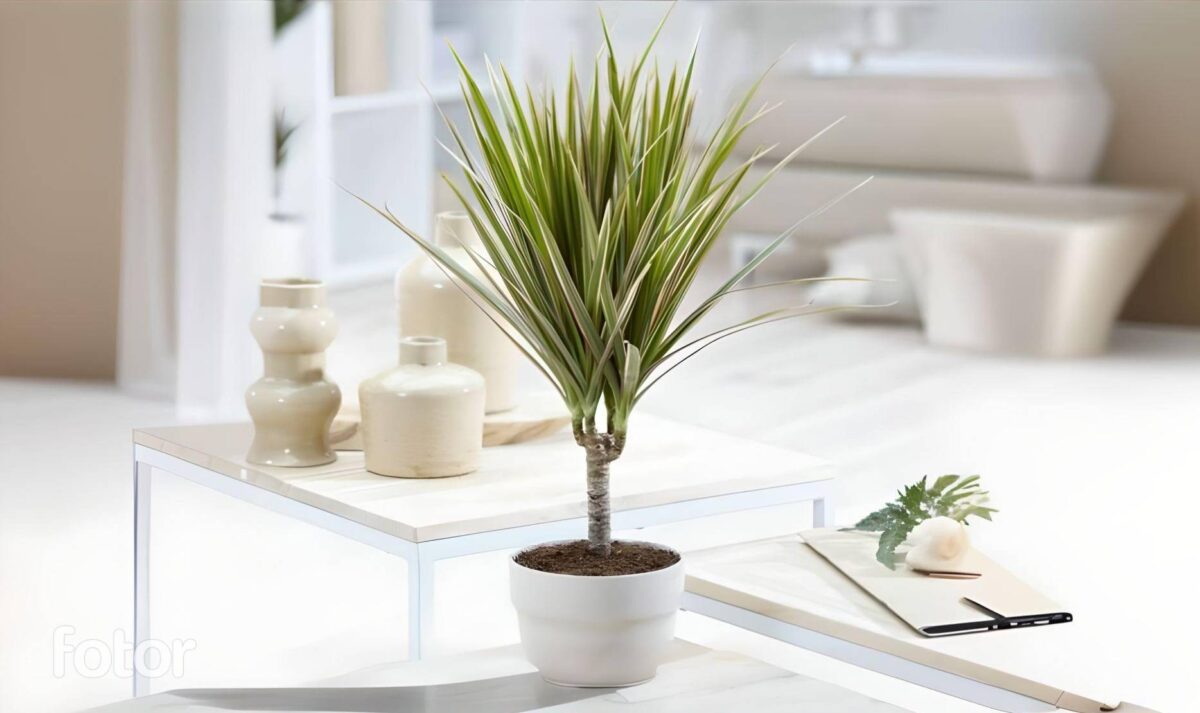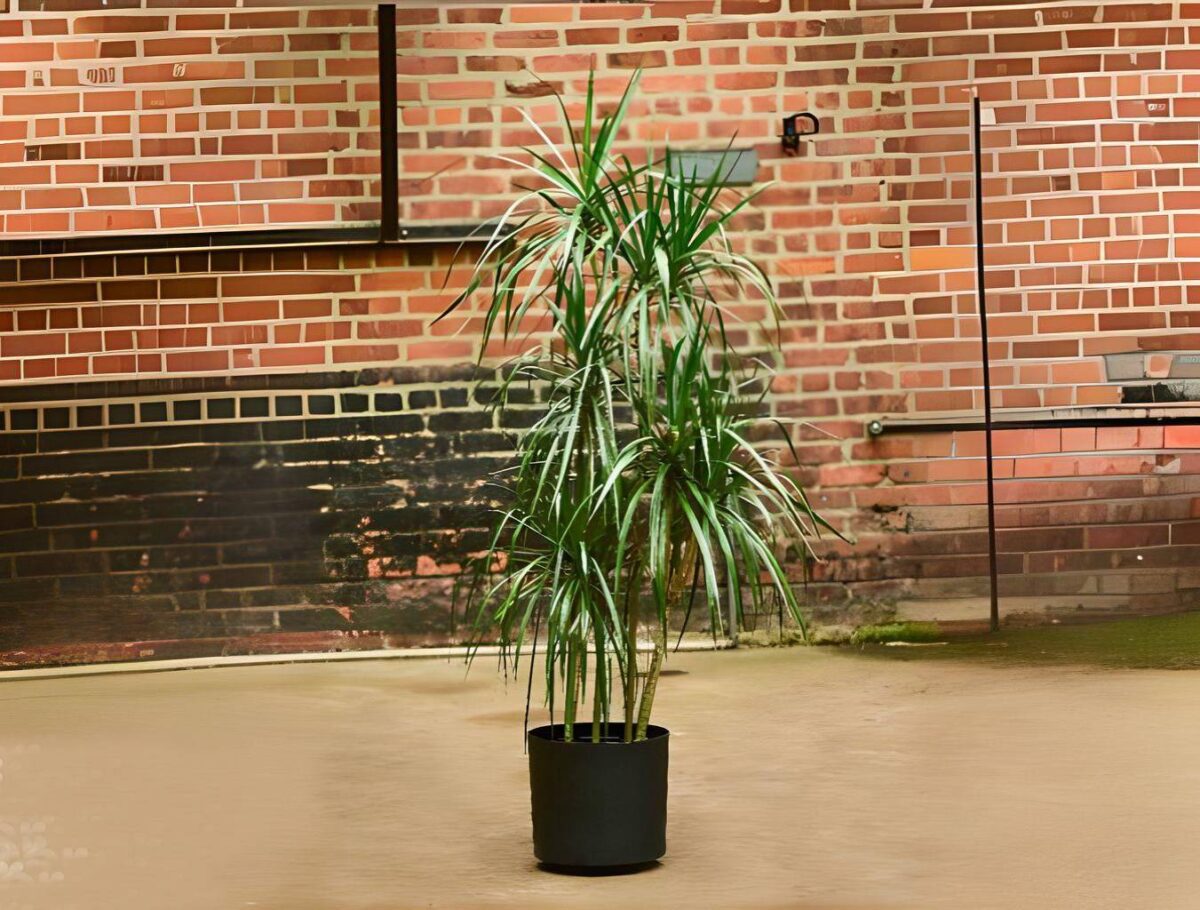
Caring for a Dragon Tree can be an incredibly rewarding experience. The dragon tree is a type of Dracaena. The dragon tree, scientifically known as Dracaena marginata, belongs to the genus Dracaena within the family Asparagaceae.
The dragon tree, named for its striking appearance that resembles a small tree with slender, arching leaves, adds a touch of elegance to any space. With its vibrant green foliage and red-edged leaves, it becomes a stunning focal point in a room. I remember when I first brought home my Dragon Tree, and it instantly elevated the vibe of my living room. However, like any other plant, it requires proper care and attention to thrive.
In this care guide, I will share my insights and knowledge on how to ensure your Dragon Tree flourishes.
Key Takeaways:
- Provide the appropriate amount of light for optimal growth
- Establish a proper watering routine
- Follow a fertilizing schedule
- Consider the right potting techniques
- Learn how to propagate the plant
- Create ideal conditions for growth and development
- Identify and manage pests and diseases effectively
In this article
Appearance of the Dragon Tree

The Dragon Tree boasts long, thin, and arching leaves that can vary in color from dark green to reddish-purple. Its leaves are often edged with a vibrant red hue, adding to its allure. This plant is a beginner-friendly choice, as it is relatively low-maintenance and adaptable. While it rarely produces flowers, its foliage is more than enough to make a statement.
When it comes to water requirements, the Dragon Tree prefers moderately moist soil, but it can tolerate some drought.
Additionally, it thrives in bright indirect light and can tolerate lower light conditions, making it suitable for various locations within your home.
For optimal growth, a pot with good drainage and a depth of at least 10-14 inches is recommended.
Light Requirements for the Dragon Tree

Natural Light:
The Dragon Tree thrives in bright indirect light, which means placing it near a window where it receives filtered sunlight is ideal. However, it can tolerate lower levels of light, making it suitable for spaces with less natural light.
Grow Lights:
If you’re growing a Dragon Tree indoors and lack access to sufficient natural light, you can use grow lights. LED grow lights are a popular option as they provide the necessary light spectrum for photosynthesis without excessive heat production.
| Light Conditions | Effect on Dragon Tree |
|---|---|
| Bright Indirect Light | Promotes healthy growth and vibrant foliage |
| Low Light | Tolerated but might lead to slower growth and less color |
| Direct Sunlight | Avoid direct sunlight as it can scorch the leaves |
Watering the Dragon Tree
The Dragon Tree should be watered thoroughly when the top inch of the soil feels dry. However, it’s important to avoid overwatering as it can lead to root rot. Remember to empty the excess water collected in the saucer beneath the pot to prevent standing water. During the dormant winter months, reduce watering frequency to prevent unnecessary moisture accumulation.
Follow these watering guidelines for the Dragon Tree:
- Water the plant when the top inch of soil feels dry.
- Use room temperature water to avoid shocking the roots.
- Ensure proper drainage by using a pot with drainage holes.
- Avoid overwatering and waterlogged soil.
Fertilizing the Dragon Tree

Indoor Plant Fertilizer Pellets: suitable for seedlings and mature plants
To provide essential nutrients for optimal growth and vibrant foliage, fertilize the Dragon Tree during the growing season.
- Use a balanced liquid fertilizer diluted to half the recommended strength.
- Apply the fertilizer every two to four weeks during spring and summer.
- Reduce the frequency to once every two months during fall and winter.
Recommended Fertilizer Dosage for the Dragon Tree:
| Month | Recommended Dosage |
|---|---|
| Spring | ½ strength every 2-4 weeks |
| Summer | ½ strength every 2-4 weeks |
| Fall | ½ strength every 2 months |
| Winter | ½ strength every 2 months |
Potting the Dragon Tree
When potting the Dragon Tree, ensure you choose a pot with drainage holes to prevent waterlogged roots. The pot size should be appropriate for the plant’s size, allowing room for root growth. To ensure proper drainage, use a well-draining potting mix, such as a mixture of indoor potting soil, perlite, and peat moss.
When repotting, gently loosen the roots and place the plant at the same level as in the previous pot. Pat down the soil around the roots and water thoroughly.
Propagation of Dragon Tree
Speaking from my own personal experience, propagating the Dragon Tree can be an exciting way to expand your plant collection or share it with loved ones.
Follow these step-by-step guidelines to propagate your Dragon Tree:
- Choose a healthy stem or cane cutting from the parent plant.
- Cut the stem at an angle with a clean, sharp knife, ensuring the cutting is at least six inches long.
- Remove the leaves from the bottom half of the stem.
- Dip the cut end of the stem in a rooting hormone (optional) to encourage root growth.
- Plant the cutting in a well-draining potting mix.
- Water the soil and cover the cutting with a clear plastic bag to create a humid environment.
- Place the cutting in a warm and bright location, avoiding direct sunlight.
- Once the root system develops, remove the plastic bag and treat it like a mature Dragon Tree.
Growth and Development of the Dragon Tree
The Dragon Tree thrives in a well-lit environment with bright indirect light. It prefers average room temperature, between 60-75°F (15-24°C). Maintain a consistent humidity level, around 40-60%, to ensure optimal growth. Regularly dusting the leaves with a damp cloth helps maintain their health and appearance. Proper pruning and removal of dead or yellow leaves also contribute to the overall development of the plant.
In my experience, I’ve found that locating my Dragon Tree near a west-facing window provides it with the perfect balance of light. The plants receive a few hours of direct sunlight in the late afternoon, which enhances the vibrancy of its leaves. However, it’s important to monitor the temperature near the window, as excessive heat or cold drafts can negatively affect the plant. By providing optimal growth conditions, such as the right light intensity and temperature, my Dragon Tree has flourished over time.
RELATED: 9 Indoor Plants that Purify the Air
Managing Pests and Diseases for the Dragon Tree
The Dragon Tree is generally resistant to pests and diseases, but it can still face some issues. Mealybugs, spider mites, and scale insects can occasionally infest this plant.
Regularly inspect the leaves, particularly the undersides, for signs of pests. If you notice any, gently wipe the leaves with a damp cloth or use an insecticidal soap to remove them.
Additionally, avoiding overwatering and providing good air circulation around the plant can prevent the development of root rot or leaf spots.
Frequently asked questions
Can the Dragon Tree tolerate low light conditions?
Yes, the Dragon Tree can tolerate lower light conditions, but it prefers bright indirect light for optimal growth.
How often should I water my Dragon Tree?
Water your Dragon Tree when the top inch of soil feels dry, but avoid overwatering as it can lead to root rot.
Can I propagate my Dragon Tree from stem cuttings?
Yes, propagating the Dragon Tree from stem cuttings is a common method. Follow the step-by-step guide provided in this care guide.
Should I fertilize my Dragon Tree during the winter months?
It is recommended to reduce the frequency of fertilization during the winter months to once every two months.
Caring for a Dragon Tree can bring a touch of elegance and beauty to any space. From its striking appearance to its adaptability, this plant is a fantastic addition to your collection. By providing the proper light, water, and nutrients, your Dragon Tree will thrive and become a focal point in your home.
Happy gardening!







